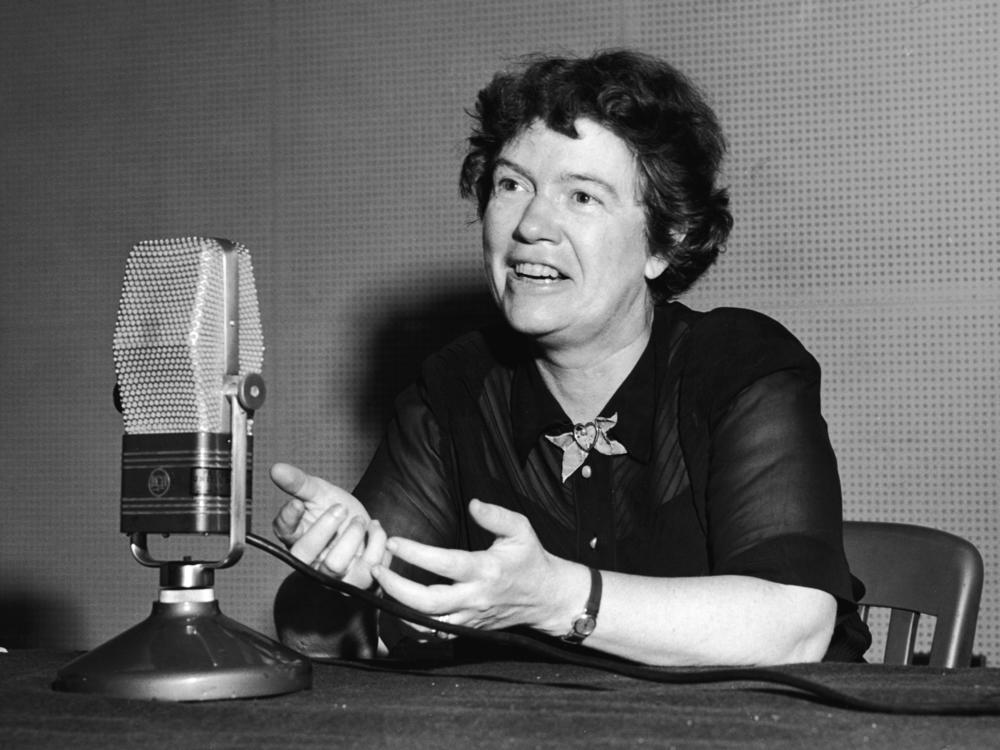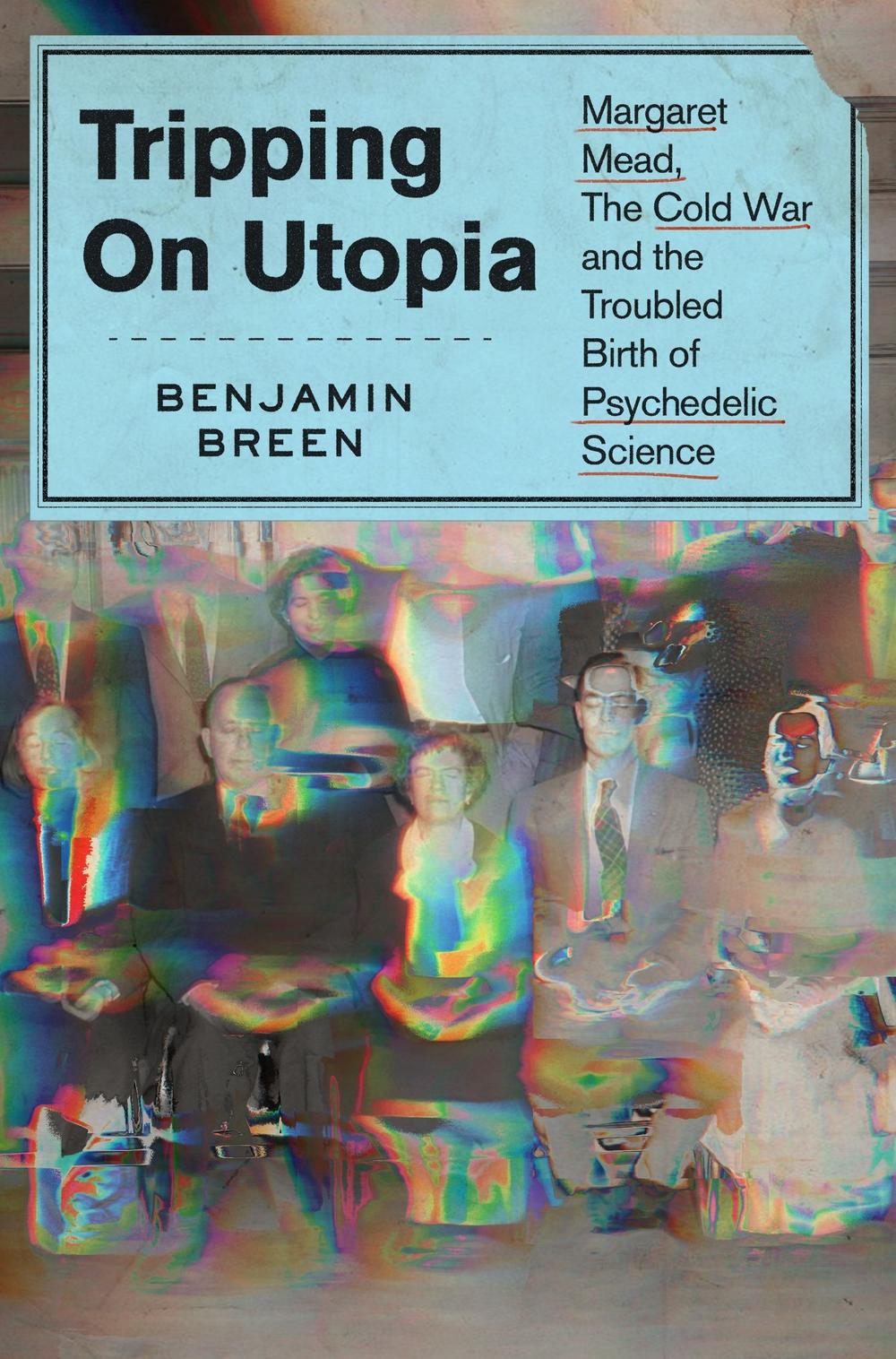Section Branding
Header Content
How Margaret Mead's research into utopias helped usher in the psychedelic era
Primary Content
Pioneering anthropologist Margaret Mead came of age in a time of enormous change and uncertainty. In the aftermath of World War I, as technologies like the radio and automobile began to take hold, Mead and her husband Gregory Bateson began to formulate a vision for utopia that relied upon plant-based psychedelics.
"They saw science as something which was responsible for some of the bad things in the world," historian Benjamin Breen says, "but also [as] something which could be a tool for fixing the world or healing a sick society."
Breen is an associate professor of history at the University of California Santa Cruz. He says Mead's research began as an effort to understand the science of expanded consciousness and hypnosis. Her specific interest in psychedelics took hold in 1930 when, while doing fieldwork on the Omaha Reservation in Nebraska, she noticed that people of the reservation were using peyote.
"Rather than seeing peyote use among the Omaha as something which predates the modern era and goes back to this ancient tradition, she came to see it as something which was modern," Breen says. "And it allowed people — and not just the Omaha — but potentially people in the rest of the world, to cope with the rapid technological changes they were going through."
During World War II, Mead and Bateson worked on a team that sought to use hypnosis and mind altering drugs in the fight against fascism. Later experiments went even further afield, with an effort to use LSD to teach dolphins how to talk.
In his new book, Tripping on Utopia, Breen writes about Mead and Bateson's early scientific research into psychedelic substances — and how their research led to secret CIA experiments using psychedelics for interrogation.
Interview highlights
On the Cold War's emphasis on altered states of consciousness and psychological warfare
Gregory Bateson, actually, after the atomic bombing of Hiroshima, writes a memo to the head of the OSS [the Office of Strategic Services] saying that unconventional means of warfare will predominate in the years to come. And so this idea of psychological warfare being more important than the warfare of conventional arms, that becomes really important in the Cold War. ... The specter of LSD being released as a gas in a subway system, for instance, that, of course, never comes to pass. But the idea that there's a war that can be expressed as a form of psychology, that we can fight battles through mass manipulation and through the media and through psychological techniques, I think that's very, very important in the history of the Cold War — and even in the present. We're living through it.
On Mead's involvement with the "Macy Circle," a group that conducted psychedelic research related to World War II
[The Macy Circle] grows out of this belief that scientists needed to directly intervene in the [World War II] effort, and specifically scientists who are studying consciousness, like anthropologists like Bateson and Mead, but also psychiatrists and psychologists. They tried to find ways that they could contribute. What this really looked like in practice was what came to be known as "psychological warfare." Forms of propaganda, ways of understanding how altered states of consciousness could be used in the war. And this led to an interest in hypnosis. It led to an interest in what was called "truth drugs," and it led to the very early psychedelic research in the United States.
Mead and Bateson are not conducting that research, but they're crucial for bringing together this group of people from different fields and framing it in a way that allowed psychedelic science to flourish as a potential pathway toward benevolent treatments, treatments that were healing for society. But also — and this is the really fascinating thing about the Macy Circle — it also got the attention of intelligence organizations and the military. So by the early Cold War, by about 1952, the Macy Circle is being co-opted by the CIA — and that's the beginning of what I see as this really important split in the history of psychedelics between the public branch and the secret branch.
On NASA-funded programs in the '60s to teach dolphins to speak using LSD
The person at the center of this story is a guy named John C. Lilly, who Bateson, in about 1961, ends up writing to and they become friends. Lilly invites Gregory Bateson to join him at this dolphin research lab he's set up with NASA funding and U.S. Navy funding in the U.S. Virgin Islands, and John C. Lilly is a physiologist, is a kind of early neuroscientist who's really deeply committed to this idea that using things like computers and emerging scientific techniques, it should be possible to communicate not just with dolphins, but with whales as well, with cetaceans. ...
And meanwhile, Lilly is injecting the dolphins with LSD and himself with LSD, and spending literally hours at a time trying to talk to them. And again, you can listen to these recordings. If you search online for the words John C. Lilly, dolphin, LSD, Stanford, you will find many, many tape recordings of this – and he doesn't make much progress, suffice to say.
On Mead's bisexuality
One of the really fascinating things about Margaret Mead that drew me into this whole book project was that she was also deeply secretive. It's hard to convey just how secretive and private she really was. Her archive is enormous, and it seems like she's an open book. But then when you dig into that archive, there's all these little clues and hints that there's other parts of her life that she's concealing from virtually everyone. In fact, at one point she says, [anthropologist and lover] Ruth Benedict is the only person who really knew her.
[After Benedict's death in 1948], from that point onwards, by Mead's own account, she's kind of a closed off person. She was open about her bisexuality with people close to her, but in the world of the '40s and '50s, to go public with that would have been not just career-ending, but potentially life-ruining. And she knew people this had happened to. It's hard not to know people like that if you're moving government circles, especially in the aftermath of World War II with the McCarthy era.
On Mead's distinction between sexuality and gender, and seeing both in a spectrum
Early on, she's truly radical and I think really deserves to be remembered as a pioneer in understanding specifically the division between gender and sexuality, which is now a widespread distinction that we make, but in the 30s, that was a very new idea that she helped develop.
On how the therapeutic use of psychedelics now is similar to the '50s
To a striking extent, what we're coming back to now in the 2020s looks a lot like what people like Gregory Bateson and the people he was working with in the 1950s were developing. So the idea is that you are in a comfortable environment, you're listening to music you like ... you're with people you feel good around. It's not like someone in a lab coat observing you, and you have a goal in mind. There's an intentionality to the way psychedelic therapy is conducted today. You're trying to solve some problem in your life or think through an issue. Those are all things that were developed in the 1950s. To an extent, they were things that got erased or largely forgotten by the more radical counter-cultural approach to LSD in the '60s, where it becomes more of a recreational drug or imbued with mystical significance. I think a lot of what we're seeing now with psychedelic therapy is actually a return to the older model.
Sam Briger and Seth Kelley produced and edited this interview for broadcast. Bridget Bentz, Molly Seavy-Nesper and Meghan Sullivan adapted it for the web.
Copyright 2024 Fresh Air. To see more, visit Fresh Air.


